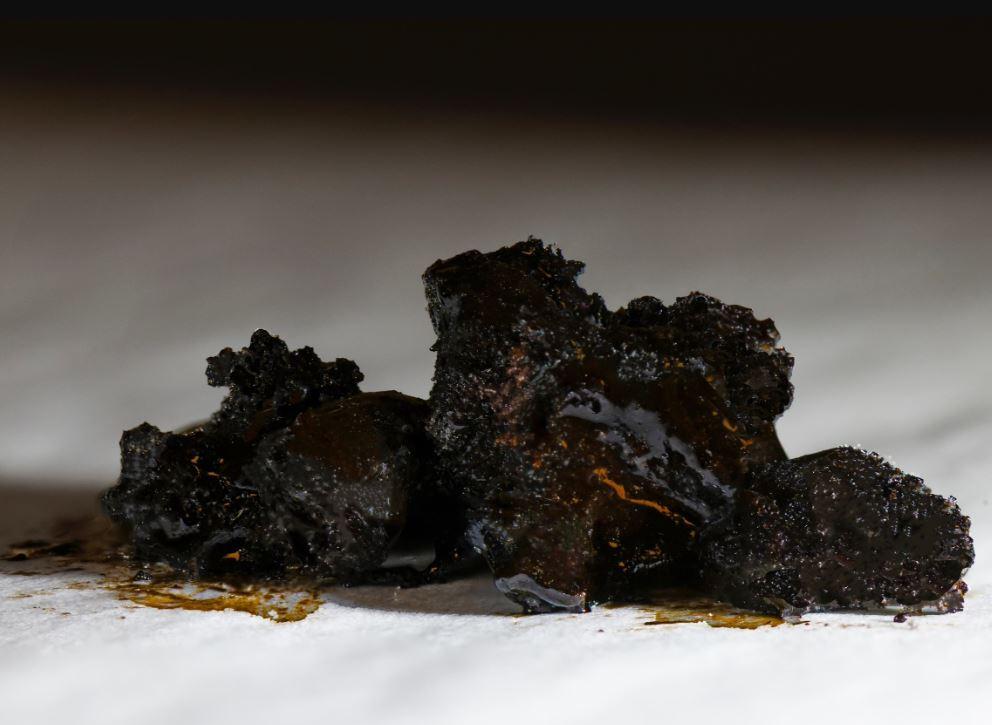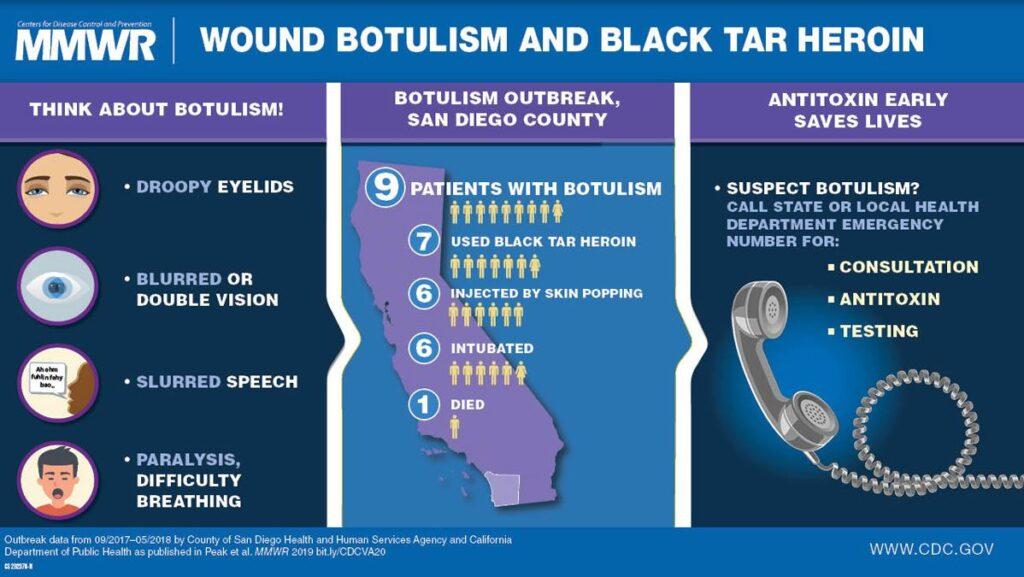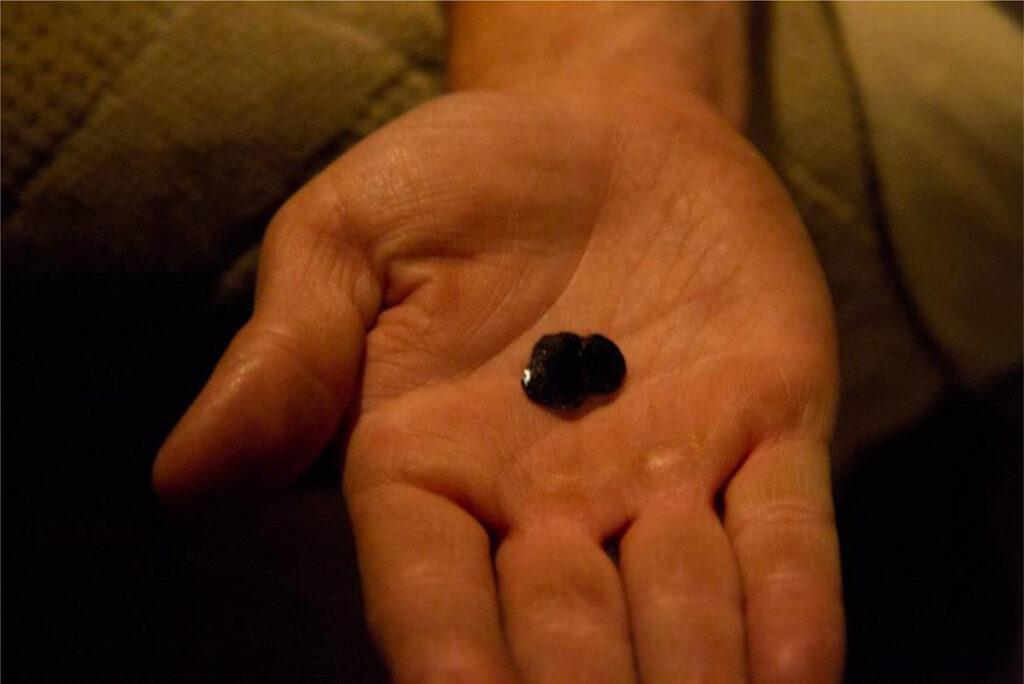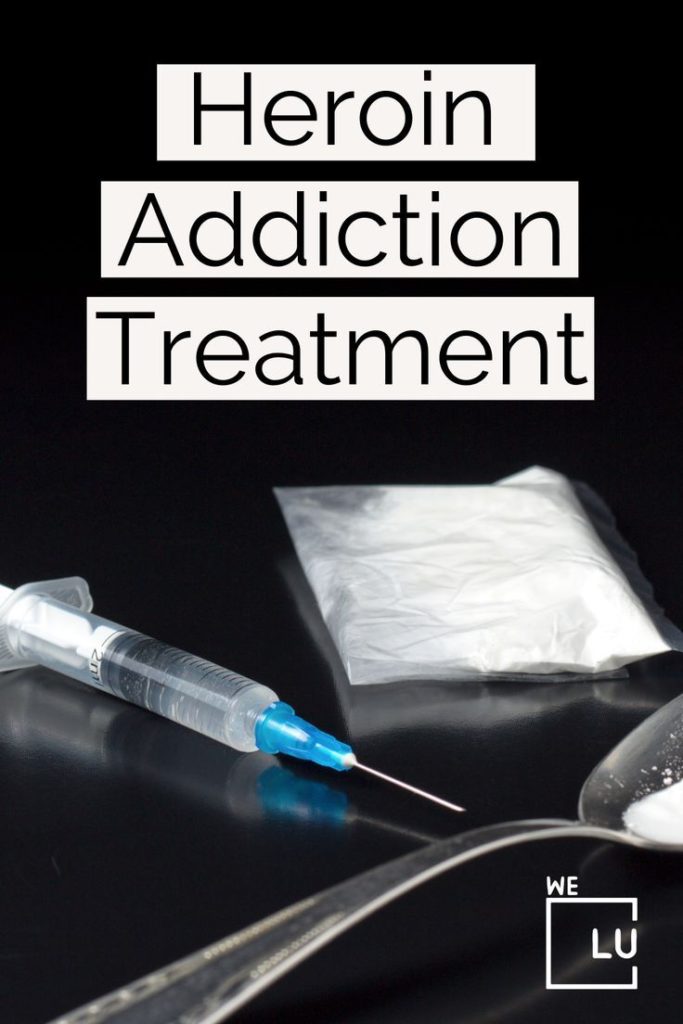What is Black Tar Heroin (Black Dragon)?
Black tar heroin, or black dragon, is a low-quality, inexpensive form of heroin. The dark, sticky substance heroin is often called “black tar” because of its impurities. Black tar heroin is typically produced in Mexico and smuggled into the United States. It is less refined than other forms of heroin, such as white powder heroin.
As an opiate, black tar heroin can have potent analgesic and depressant effects. However, it is highly addictive and can be hazardous. As it sounds, black tar heroin is a cruder form of illicit opioid that is black and sticky in appearance and texture.
Many people have heard that black tar heroin isn’t as pure and think it isn’t as potent as its white powder form; however, it is just as strong. This misconception can easily lead to people overdosing, thinking they need more to get the same high. Because of its crude form, the sticky tar cannot be used intravenously unless diluted into a liquid, typically by heating with a spoon. People with black tar heroin will also smoke it, often on tin foil, or ingest it another way.
Black tar heroin or black dragon drugs are illegal and dangerous. If you or someone you know is struggling with substance abuse, contact We Level Up Treatment Centers for professional help and support. Our accredited and licensed addiction treatment centers specialize in advanced science-based drug treatment.
Black Tar Heroin Effects
Black tar heroin, like other forms of heroin, has a range of effects on the body and mind. It acts as a potent central nervous system depressant, affecting various systems in the body. Here are some of the effects commonly associated with black tar heroin use:
- Euphoria and relaxation.
- Contentment.
- Respiratory depression.
- Nausea and vomiting.
- Pain relief.
- Reduced anxiety.
- Relieved tension.
- Sedation and drowsiness.
- Apathy.
Continued use of black tar heroin can lead to physical dependence, which means the body adapts to the presence of the drug. When use is abruptly stopped or reduced, withdrawal symptoms can occur. These symptoms include restlessness, muscle and bone pain, insomnia, cold flashes, vomiting, and diarrhea.
Heroin use can also impair cognitive function, memory, and decision-making abilities. It may also lead to confusion, clouded thinking, and difficulty concentrating. Other long-term effects of black tar heroin include the following:
- Insomnia.
- Collapsed veins (from intravenous use).
- Damaged tissue (where the drug is ingested).
- Infection of the heart lining and valves.
- Abscesses (swollen tissue filled with pus).
- Constipation and stomach cramps.
- Liver and kidney disease.
- Lung disease.
- Mental disorders.
- Erectile dysfunction in men.
- Irregular menstrual cycles in women.
Moreover, the use of heroin, including black tar heroin, often causes the pupils to constrict and appear significantly smaller than usual. This effect is sometimes referred to as “pinpoint pupils.”
How is Black Tar Heroin Made?
Producing and distributing heroin, including black tar heroin, is illegal due to its highly addictive and harmful nature. Black tar heroin is typically made through a relatively simple and less refined process compared to other forms of heroin.
The production process begins with opium extracted from the opium poppy plant. The opium is then processed by acetylating morphine, resulting in the creation of heroin. The acetylation process involves combining morphine with chemicals like acetic anhydride or acetyl chloride to create a crude form of heroin.
This process produces impurities, giving black tar heroin a dark color and sticky texture. The final product is then typically packaged and smuggled for distribution.
What Does Black Tar Heroin Look Like?

Skip To:
Learn More:
- The Signs & Risks Of Smoking Black Tar Heroin
- Can You Snort Black Tar Heroin? Symptoms & Risks
- What Does Black Tar Heroin Smell Like? What Does Black Tar Heroin Look Like?
- How Long Does It Take To Withdraw From Heroin?
- Heroin Detox Timeline, Withdrawal Symptoms, Care & Treatment
- Heroin Addiction Symptoms, Signs, & Side Effects
- How Long Does a Heroin High Last?
- What Does a Heroin High Feel Like? Effects, Overdose, Withdrawal, & Treatment
- What Does a Heroin Addict Look Like?
- Heroin Paraphernalia
Black Tar Heroin Drug Facts
Black Tar Heroin Street Names: Black Dragon, Big H, Chiva, Black Tar, Hell Dust, Horse, Thunder, Negra, Smack.
How To Use Black Tar Heroin?
Black tar heroin can be ‘chased’ (inhaled) when heated on foil. Others dissolve black tar heroin for snorting or injecting. It can require a knife to cut, be brittle enough to shatter, or be soft enough to stretch and tear apart when warmed to body temperature, perhaps in a pocket.
People snort black tar heroin in two different ways. The first way is by putting the mixture into a spoon with water and stirring it up until you have reached “thickness,” which means there will be enough paste for both nostrils when appropriately done (or just one). You then either sniff or bite down on your dose and place the tar in the recess of your gums.
Can You Smoke Black Tar Heroin?
Black tar heroin can be smoked. Smoking is one of the administration methods for heroin, including black tar heroin. To smoke it, the drug is typically heated on a piece of foil or in a pipe until it vaporizes, and the resulting smoke is inhaled. Smoking black tar heroin allows the drug to be rapidly absorbed into the bloodstream through the lungs, leading to a quick onset of effects. However, smoking heroin, or any form of heroin, carries significant health risks and is highly addictive.
Black Tar Heroin Wound Botulism
Black tar heroin use has been associated with an increased risk of developing wound botulism. Wound botulism is a rare but severe condition caused by the bacterium Clostridium botulinum. It occurs when the bacteria contaminate an open wound and release toxins, leading to muscle weakness and difficulty speaking, swallowing, and breathing.
In heroin use, wound botulism can occur when contaminated needles or other injection equipment are used. The bacteria can be introduced into the body through skin punctures or injections, especially if hygiene practices are inadequate.
The use of heroin, specifically through injection, can carry additional risks due to the potential for unsterile equipment and injection practices. Sharing needles or reusing needles increases the likelihood of bacterial contamination and the transmission of infections, including wound botulism.
Wound botulism requires immediate medical attention, as it can be life-threatening. Treatment typically involves administering an antitoxin and providing supportive care to manage botulism symptoms and prevent complications.
Individuals who engage in black tar heroin use should be aware of the risks associated with wound botulism and take necessary precautions to minimize harm, such as using sterile injection equipment and seeking medical assistance for any signs of infection or abscess formation.


Get Your Life Back
Find Hope & Recovery. Get Safe Comfortable Detox, Addiction Rehab & Dual Diagnosis High-Quality Care.
Hotline(844) 597-1011Black Tar Heroin Statistics
Black tar heroin is more commonly found in the western regions of the United States, particularly in states that share a border with Mexico. The production and distribution of black tar heroin have historically been associated with Mexican drug trafficking organizations.
745,000
In 2019, an estimated 745,000 people aged 12 or older in the United States had a heroin use disorder.
Source: NIDA
$20
The average bag of black tar heroin price is less than $20.
Source: DEA
14,000
Heroin use, including black tar heroin, is associated with a high risk of overdose. In 2019, over 14,000 deaths in the United States involved heroin.
Source: CDC
Black Tar Heroin vs Heroin
Black tar heroin and heroin are both forms of illicit drug derived from the opium poppy plant. However, they differ in terms of their physical properties, production methods, and purity levels.
- Physical Properties: Black tar heroin is typically dark brown or black in color, sticky, and has a tar-like consistency. It gets its name from its appearance. On the other hand, heroin is commonly found as a white or off-white powder, although it can sometimes be found in different colors or as a solid chunk (known as “rock” or “brick” heroin).
- Production: Black tar heroin is generally produced using a less refined process compared to other forms of heroin. It involves the acetylation of morphine, resulting in a cruder and less pure form of heroin. The process often leads to impurities and a lower overall purity level. Other forms of heroin, such as the white powder commonly known as “China white,” undergo additional processing and refining steps to increase purity.
- Purity: Black tar heroin has a lower purity level than other forms of heroin. It can range from 30% to 80% purity, with impurities present due to the production process. In contrast, other forms of heroin, particularly the white powder variants, can have higher purity levels, often exceeding 80% or even approaching 100%.
Both black tar heroin and other forms of heroin share the same opioid effects when consumed. They act on opioid receptors in the brain, producing a euphoric high, pain relief, and other central nervous system depressant effects. All forms of heroin, regardless of their specific characteristics, are highly addictive and associated with significant health risks and legal consequences.
Get Help. Get Better. Get Your Life Back.
Searching for Accredited Drug and Alcohol Rehab Centers Near You?
Even if you have failed previously and relapsed, or are in the middle of a difficult crisis, we stand ready to support you. Our trusted behavioral health specialists will not give up on you. When you feel ready or just want someone to speak to about therapy alternatives to change your life call us. Even if we cannot assist you, we will lead you to wherever you can get support. There is no obligation. Call our hotline today.
(844) 597-1011Signs of Heroin Black Tar Drugs Overdose
Heroin overdose is a life-threatening emergency that can occur when an individual takes an excessive amount of the drug. It is a potent opioid drug, after all, that depresses the central nervous system. An overdose can lead to severe respiratory depression, coma, and, in some cases, death.
Signs of heroin overdose include, but aren’t limited to:
- Shallow or no breathing.
- Low blood pressure.
- Weak pulse.
- Dry mouth.
- Tongue discoloration.
- Tiny pupils (pinpoint pupils).
- Extreme drowsiness.
- Slow pulse.
- Bluish lips and nails.
- Stomach or intestinal spasms.
- Delirium.
- Disorientation or confusion.
- Passing out.
- Uncontrollable muscle movements.
If someone begins exhibiting these symptoms, timely use of naloxone can reverse them and stop an overdose before it turns fatal. Any form of a heroin overdose is a medical emergency, and timely intervention can save lives.
Heroin Tar Black Withdrawal Symptoms
Withdrawal from any heroin can lead to various physical and psychological symptoms. These symptoms occur when a person dependent on the drug abruptly stops using it or significantly reduces their dosage. The severity and duration of heroin withdrawal signs and symptoms can vary based on factors such as the individual’s level of dependence, the amount and frequency of heroin use, and individual differences in physiology and metabolism.
Here are some common withdrawal symptoms associated with black tar heroin:
- Physical symptoms:
- Nausea and vomiting.
- Diarrhea and stomach cramps.
- Sweating and chills.
- Muscle aches and pains.
- Runny nose and teary eyes.
- Increased heart rate and blood pressure.
- Dilated pupils.
- Tremors or shakiness.
- Psychological symptoms:
- Anxiety and restlessness.
- Irritability and mood swings.
- Insomnia or disturbed sleep patterns.
- Depression and feelings of sadness or emptiness.
- Cravings for heroin.
- Difficulty concentrating or focusing.
Picture of Black Tar Heroin or Black Bragon
Pictured below is black tar heroin, or black dragon. It is a black and sticky substance. Black tar heroin is a dangerous and addictive drug.

Withdrawal symptoms usually start within a few hours to a day after the last dose of black tar heroin and peak within the first 48 to 72 hours. The acute withdrawal phase can last for several days to a week, followed by a more extended period of protracted withdrawal, during which some symptoms may persist for weeks or even months.
First-class Facilities & Amenities
World-class High-Quality Addiction & Mental Health Rehabilitation Treatment
Rehab Centers TourRenowned Addiction Centers. Serene Private Facilities. Inpatient rehab programs vary.
Addiction Helpline(844) 597-1011Proven recovery success experience, backed by a Team w/ History of:
15+
Years of Unified Experience
100s
5-Star Reviews Across Our Centers
10K
Recovery Success Stories Across Our Network
- Low Patient to Therapist Ratio
- Onsite Medical Detox Center
- Comprehensive Dual-Diagnosis Treatment
- Complimentary Family & Alumni Programs
- Coaching, Recovery & Personal Development Events
Black Tar Heroin Addiction Treatment
Many who become dependent on heroin do not start with this opioid because that is what they want. Statistically, the average heroin user will turn to heroin after developing an opioid addiction. This is generally from a prescription opioid they received legally for legitimate pain. However, they may not realize that they have developed an addiction until their prescription runs out. After that point, they must find a new way to feed the biological craving they are feeling.
If you or someone you love suffers from addiction to black tar or any heroin, do not be afraid to seek help. The We Level Up treatment center provides world-class care with round-the-clock drug use treatment professionals to help you cope. We are an integrated team providing medical and evidence-based support for drug addiction.
So many cases of addiction start innocently, with someone just trying to manage physical pain. The worst thing you can do is close yourself off. It will allow your addiction to grow while you push away those closest to you. Contact a dedicated treatment provider today if you don’t know where to start. They’re here to help you on your way to long-term recovery.
World-class, Accredited, 5-Star Reviewed, Effective Addiction & Mental Health Programs. Complete Behavioral Health Inpatient Rehab, Detox plus Co-occuring Disorders Therapy.
CALL(844) 597-1011End the Addiction Pain. End the Emotional Rollercoaster. Get Your Life Back. Start Drug, Alcohol & Dual Diagnosis Mental Health Treatment Now. Get Free No-obligation Guidance by Substance Abuse Specialists Who Understand Addiction & Mental Health Recovery & Know How to Help.
Top 3 Heroin Black Tar Form FAQs
-
What does black tar heroin smell like?
Black tar heroin, commonly misspelled as “black tar heroine,” has distinctive odors like ‘vinegar,’ ‘acidic,’ ‘burning molasses and vinegar,’ and coffee. Some speculated it was cut with molasses, sugar, lactose, or shoe polish, but few had direct experience with the cutting process.
-
How to make black tar heroin?
The production, distribution, and use of black tar heroin are illegal. Furthermore, the production process of black tar heroin is hazardous and unregulated, often involving toxic and volatile chemicals. The resulting product is highly impure and poses significant health risks to individuals who use it. Many often misspell its term as “black tar heroines effects” or “black tar heorin.”
-
What are the effects of black tar opium?
Black tar opium, also known as opium resin or opium gum, is a form of opium that is less refined than other opium derivatives, such as heroin. Black tar opium use carries significant risks and can lead to addiction, respiratory depression, constipation, cognitive impairment, and various health complications. Others also find “black tar meth” to match the effects of heroin. Others also sought after “black tar hashish.” Hashish, also known as hash, is a concentrated form of cannabis resin typically derived from the trichomes of the cannabis plant.
How Long Do Opiates Stay in Your System? How Long Do Opiates Stay in Urine, Blood, & Body?
Black tar heroin is classified as an opiate. It is derived from morphine, a natural substance in opium poppy plants. Heroin, including black tar heroin, belongs to the class of drugs known as opioids. Many searched for “What is black tar heroine?” or “What is black tar herion?” A common misspelling for the drug heroin.
Heroin is an illicit and illegal drug. It is highly habit-forming and has no approved medical use. The use of heroin, including black tar heroin, carries significant risks and can lead to a range of negative consequences for the individual using the drug and society.
It’s essential to seek professional help if you or someone you’re concerned with is struggling with opiate addiction or substance abuse.
Get a FREE black dragon or black tar heroin addiction treatment insurance check.
If you or a loved one is struggling with black tar heroin addiction or other substance use disorder(s), call for a FREE consultation 24/7. Get a free substance abuse assessment from the comfort of your home. Call now,
How Long Do Opiates Stay in Your System? Video Transcript.
Welcome to the We Level Up treatment center video series. In today’s video, we will discuss How Long Do Opiates Stay in Your System? How Long Do Opiates Stay in Urine, Blood, & Body? Learn the Hydrocodone, Oxycodone, & Codeine Drug Testing Facts.
The length of time that opiates remain in your system varies depending on the type of opiate, the dosage, and the frequency of use. Generally, opiates can stay in your system for two to four days. However, heavier and chronic users may have residues for up to seven days.
Opiates can be detected in the blood test for up to 24 hours and the urine test for up to three days. Opiates can be detected in the hair follicles for up to 90 days. In chronic users, opiates can stay in the body for up to 30 days.
Opiates often have short half-lives, meaning their effects can linger for several hours even though they swiftly leave the body. However, Opioids can linger in a person’s bloodstream for several hours or days after the symptoms subside, depending on the substance used. Urine tests, one of the more common types of drug testing, can identify opioid usage for longer periods, often up to three to four days, and some tests can identify opioid use for up to three months.
Drugs in the opioid class are used to treat pain. Natural opioids, semi-synthetic opioids generated from natural opioids, and synthetic opioids produced in a lab are all referred to as opioids under the general term. A class of medications known as opioids contains opiates, which are organic byproducts of the poppy plant.
The main difference is that “opiate” refers to the substances derived from the opium (poppy) plant. At the same time, “opioids” are all substances that interact with opioid receptors, including those created in the lab.
What are Opioids?
Opioids, sometimes called narcotics, are medications doctors prescribe to treat persistent or severe pain. They are used by those with persistent headaches and blood alcohol levels, those recovering from surgery or dealing with excruciating pain from cancer, as well as by adults and kids who have suffered major injuries while playing sports or in falls, car accidents, or other situations.
A large class of painkillers known as opioids interact with opioid receptors in your cells to relieve pain. Opioids can be produced in a lab, such as fentanyl, or from the poppy plant, such as morphine, Kadian, Ms. Contin, Actiq, Duragesic, and others.
Your brain cells release signals that reduce your sense of pain and increase your emotions of pleasure when opioid drugs pass through your blood and bind to opioid receptors. Opioid addiction can happen after just a week of use. The risk for long-term opioid abuse increases after only five days of taking medicine. Some individuals who only intended to use opioids for a week have continued to do so a year later.
Compared to 2019, the age-adjusted rate of drug overdose deaths rose 31% in 2020. Young individuals aged 15 to 24 saw the biggest percentage increase in fatalities, while adults aged 35 to 44 had the greatest rates of drug overdose deaths. The fight against substance use disorders and the opioid pandemic must continue in all facets.
Opiates Drugs Names
There are a variety of opiate drugs, all with different names. Some examples include codeine, morphine, oxycodone, hydrocodone, fentanyl, and methadone. It is important to know the names of opiates when seeking help for addiction, as intervention strategies and treatment plans may depend on the specific opiates being abused.
The top three opiate drugs most commonly prescribed are Hydrocodone, Oxycodone, and Codeine. Other opiate drugs may also be prescribed, depending on your needs and doctor’s advice.
Experience Transformative Recovery at We Level Up Treatment Centers.
See our authentic success stories. Get inspired. Get the help you deserve.
Start a New Life
Begin with a free call to an addiction & behavioral health treatment advisor. Learn more about our dual-diagnosis programs. The We Level Up Treatment Center Network delivers recovery programs that vary by each treatment facility. Call to learn more.
- Personalized Care
- Caring Accountable Staff
- World-class Amenities
- Licensed & Accredited
- Renowned w/ 100s 5-Star Reviews
We’ll Call You
Search We Level Up Black Tar Heroin Detox, Mental Health Topics & Resources
Sources
[1] National Institute on Drug Abuse. (2018). Heroin. Retrieved on August 16th, 2018, from https://www.drugabuse.gov/publications/drugfacts/heroin
[2] Centers for Disease Control and Prevention. (2017). Injection Drug Use and Wound Botulism
[3] Chasing the Black Dragon – Office of Justice Programs (OJP)
[4] Maxwell JC, Spence RT. An Exploratory Study of Inhalers and Injectors Who Used Black Tar Heroin. J Maint Addict. 2006 Jan 1;3(1):61-82. DOI: 10.1300/J126v03n01_06. PMID: 21552428; PMCID: PMC3088121.
[5] Heroin – National Institute on Drug Abuse (NIDA) Available from: https://nida.nih.gov/research-topics/heroin
[6] Wound Botulism Outbreak Among Persons Who Use Black Tar Heroin — San Diego County, California, 2017–2018 – Centers for Disease Control and Prevention (CDC)
[7] BLACK-TAR HEROIN, METH, AND COCAINE CONTINUE TO FLOOD THE UNITED STATES FROM MEXICO – Report available from: https://www.govinfo.gov/content/pkg/CHRG-106hhrg72582/html/CHRG-106hhrg72582.htm
[8] Mars SG, Bourgois P, Karandinos G, Montero F, Ciccarone D. The Textures of Heroin: User Perspectives on “Black Tar” and Powder Heroin in Two U.S. Cities. J Psychoactive Drugs. 2016 Sep-Oct;48(4):270-8. DOI 10.1080/02791072.2016.1207826. Epub 2016 Jul 20. PMID: 27440088; PMCID: PMC5027195.
[9] Jeffery IA, Karim S. Botulism. [Updated 2022 Jul 18]. In: StatPearls [Internet]. Treasure Island (FL): StatPearls Publishing; 2023 Jan-. Available from: https://www.ncbi.nlm.nih.gov/books/NBK459273/
[10] Botulism Prevention – Centers for Disease Control and Prevention (CDC)



